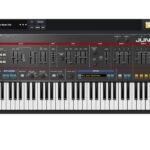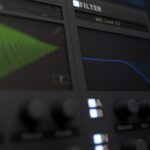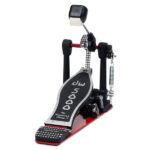Synthesizers are a crucial part of the music production process. And there is no doubt that the right choice of synthesizer can directly impact your creativity and the quality of sound you produce.
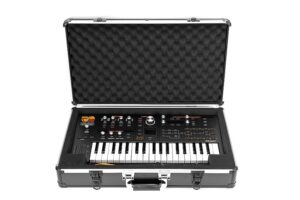
They help you express your artistic ideas and achieve of desired sonic results.
And in the diverse market of synthesizers, two well-known names are Hydrasynth Explorer and Hydrasynth Deluxe.
Manufactured by Ashun Sound Machines, within a time span of three years, Hydrasynth Explorer has successfully secured its place in almost half of the studios in the US.
But with the introduction of its Desktop version, it’s difficult to choose between both.
Thus the article aims to compare both in detail. We will look for their features, specifications, and performance to analyze which can help you better depending on your personal needs and preferences.
Contents
Brief Overview of Hyrasynth Explore and Desktop
For a basic understanding, it would not be wrong to assume Hydrasynth Explorer, a baby product of the Hydrasynth lineup, while the Desktop, a grown-up version.
In his 2020 review, Paul Nagle admired the Explorer for its compact design, portability, polyphonic aftertouch, and solid build.
With its limited functionalities, the product features an 8-note engine and small keys.
Contrary to this, with advanced features and the availability of diverse options, the Desktop is the Rolls Royce of the Hydrasynth lineup.
However, both suit differently to individuals with different needs. Thus below given is their detailed comparison.
Hydrasynth Explorer vs Delux– Comparison
Both models of Hydrasynth, the Explorer and Desktop, are exceptionally good.
Though manufactured by the same company and operating on the same basic algorithms, both products exhibit their distinct specifications and features.
Thus, choosing between both is mainly dependent on individual choices like requirements for portability and versatility. Below is their brief evaluation to determine which one suits your needs best.
Sound Engine
The Explorer offers an analog wave morphing synth engine that allows blending between different waveforms, either its analog-style tones or complex evolving tone structures.
Contrary to Hydrasynth Explorer, its Desktop model utilizes advanced digital wavetable synthesis and allows the crafting of classic analog emulations to futuristic textures and evolving atmospheres.
One important consideration here is that Hydrasynths are generally regarded as wavetable synthesizers, but the notion is somehow not true.
In fact, they come with static waveforms and develop their sonics among them, but the end results are almost the same as those of wavetables.
Polyphony and Performance
Performance capabilities and polyphony are vital factors to consider when evaluating a synthesizer’s versatility and flexibility.
With the availability of 8-voice digital synth polyphony, the Hydrasynth Explorer enables the creation of rich and layered sounds, ensuring that your performance is not limited due to voice limitations.
While in the case of Hydrasynth Desktop, the polyphony is up to 32 voices, making the quality of complex and layered patches more deep and rich.
Additionally, Desktop’s expanded polyphony provides even greater possibilities for intricate sound design and performance, making it an ideal choice for more demanding compositions and arrangements.
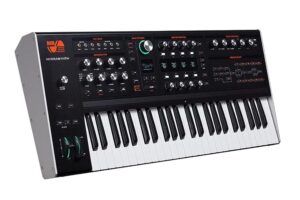
Controls and User Interface
Regarding controls, the Explorer has a high-quality 37-note keyboard with velocity sensitivity. Additional controls include a control panel with knobs, buttons, and an informative OLED display.
Contrary to Explorer, the Desktop offers a 49-notes keyboard with additional after-touch sensitivity.
Furthermore, the options for Knobs, sliders, and buttons are also more diverse than the Explorer, which helps in intricate sound shaping.
Talking about the user interface, the Explorer has a simple yet efficient interface.
This streamlined layout allows for quick and straightforward access to essential parameters, making sound shaping and tweaking a breeze.
While the Desktop, with its extensive control surface, provides immediate access to a broader range of parameters and allows for more intricate sound design and modulation possibilities.
Modulation and Effects
Both Hydrasynth models provide comprehensive sound manipulation options such as amplitude modulation, frequency modulation, and wave shaping, enabling you to sculpt sounds precisely and create unique timbres.
Though the Explorer has a basic framework, its modulation options still offer versatility.
Its main features include envelopes, LFOs, and modulation matrices. Additionally, its built-in effects like reverb, delay, and chorus allow for adding depth to the sound and shaping accordingly with character.
As the Desktop model is more advanced, it also excels in modulation possibilities; the choices are vast, whether it is about envelopes, LFOs, or sound effects.
One noticeable feature in both models is that all the effects can be activated simultaneously.
Connectivity
Both the HydraSynth Explorer and HydraSynth Desktop offer a wide range of connectivity options to ensure seamless integration with your existing setup.
These synthesizers provide MIDI connectivity, allowing you to connect to external MIDI controllers, sequencers, and other MIDI-enabled devices.
Additionally, they offer USB connectivity, enabling direct communication with your computer for MIDI control, software integration, and firmware updates.
Both models also feature audio inputs and outputs, allowing you to connect them to mixers, audio interfaces, or other audio devices.
This facilitates recording, processing external audio sources, or using the synthesizers as sound modules within your setup.
Additionally, both models support CV/Gate connectivity, enabling integration with modular synthesizers and other analog gear.
Oscillators and Filters
The HydraSynth Explorer and HydraSynth Desktop provide robust oscillators and filters.
Each model offers multiple oscillators, allowing you to layer and stack waveforms for complex and textured timbres.
Additionally, they incorporate various filter types, including low-pass, high-pass, and band-pass filters, enabling precise control over the frequency spectrum.

Design and Ergonomics
Design and dimensions are the key differentiators between Hydrasynth Explorer and Desktop.
The Explorer is mainly for individuals with budget and space restrictions. With a 3.5 kg of weight, it has a three-octave mini keybed.
However, its portable design makes it a perfect choice for producers on the go or those with limited space.
On the other hand, the Desktop’s advanced form factor provides more extensive control and requires a significant space in your studio setup.
Its additional controls, larger keyboard, and expansion slots make it an attractive option for individuals with more intricate sound production needs.
While talking about ergonomics, both models have well-spaced and well-positioned controls. However, in Desktop, with its larger size, it offers a more hands-on approach.
Ultimately the Explorer is more suitable for beginners who need easy reach, while the Desktop allows for more precise control and easy navigation in complex synthesis.
Target Audience and Ideal Use Case
Before we come up with our final verdict on which model is best, it’s important to analyze its usability for different audiences.
While the Hydrasynth Explorer has a compact design, lightweight, low price, and easy portability options, it is more of use in live performances, in the home studio, and for beginner synth enthusiasts.
On the other hand, the Hydrasynth Desktop features advanced creativity options, is heavyweight, and requires considerable space to operate effectively.
Thus, it is recommended for professional musicians, sound designers, and large studios with complex production needs.
The Final Verdict
In the article, we have explored two well-known models of the Hydrasynth family, Explorer and Desktop. We have analyzed them through the lens of various factors, including their specifications, features, and designs.
Though both machines excel in their offerings, the bar for Desktop deliverables is comparatively high.
This is because of its advanced synthesis capabilities, more powerful build-up, and multiple integration options. It caters to professionals, enthusiasts, and those seeking a powerful workstation.
While it comes with a higher price tag, its features, flexibility, and customization potential justify the investment for those with specific needs.
However, the choice for any machine lies with personal preferences.
Whichever model you choose, both the HydraSynth Explorer and HydraSynth Desktop promise to unlock new sonic landscapes and inspire your musical journey. Happy synthesizing!

